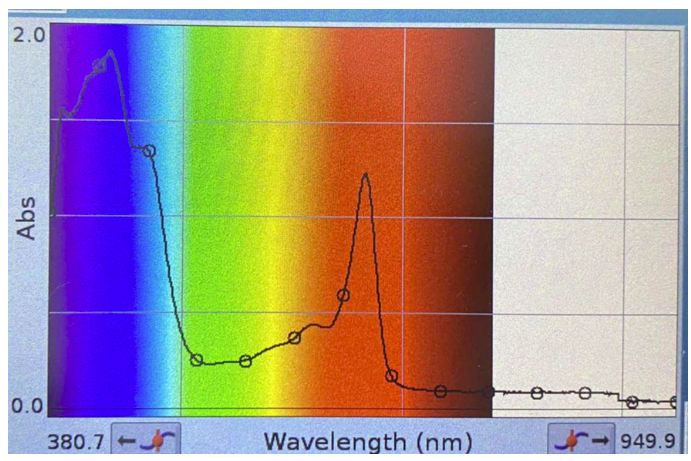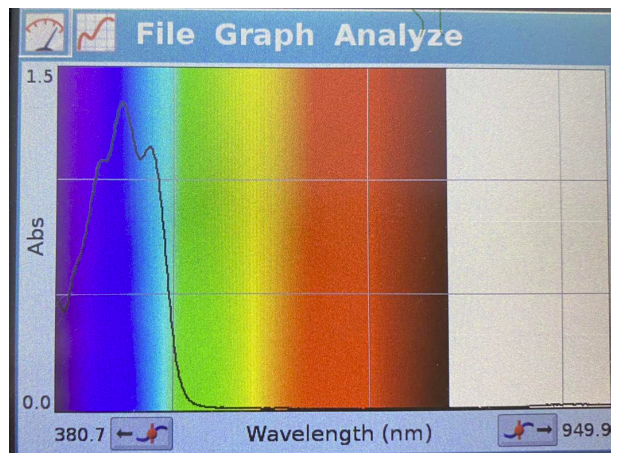IBDP Biology Practical 4: Chromatography of Photosynthetic Pigments
- Carly Thomas
- May 2, 2023
- 4 min read
The fourth of the seven required practicals is all about analyzing photosynthetic pigments, using chromatography (and I also include spectral analysis). In case you're new to the IBDP Biology course there are six required practicals for Standard Level (SL) students as well as one additional required practical for Higher Level (HL) Biology students. This is my fourth blog post about these required practicals, you can find the post about the Practical 1 or Microscopy practical here, my post about Practical 2 or the Potato Core Practical here and my post about Practical 3 or the Enzyme Activity practical here.
This practical is a pretty tricky one for many students, the required chromatography component is fun and not too complex to understand, but the addition of spectral analysis is considerably more challenging, which is why I have included it in the lab. Due to the complexity and time consuming nature of this lab I often do Practical 4 over a two shorter classes or a double block day and have half the class do Part 1 (Chromatography) while the other half does Part 2 (Spectral/Colorimter Analysis) and then we switch during the next block. I have adapted and tweaked my approach to this practical over the years and based on the materials available to me at the school where I am teaching. The version which I will discuss and share about in this post is the most recent one and uses Spinach leaves for the chromatography and then both spinach and carrot for both spectral and colorimeter analysis. While Colorimeter use is not part of the required practical it is often a useful tool in Biology and I make an effort to use it in class before students begin their IAs as it is a helpful option for them to have. For this reason, even when the curriculum changes for next cohort (first exam May 2025) I will continue to use this practical a part of my PSOW (see my detailed post about this here).
Here is the description of Practical 4 which you will find on page 47 of the IBDP Biology Subject Guide: Skill: Separation of Photosynthetic Pigments by Chromatograph. (Practical 4). There is also some important guidance to make note of for this practical: Paper chromatography can be used to separate photosynthetic pigments but thin layer chromatography gives better results (pg. 48); it is good to note that I have seen questions on Paper 3 about both paper chromatography and thin layer chromatography so make sure you at least explain both to your students. Another key skill in subtopic 2.9 of the guide (also on page 47) is Skill: Drawing an absorption spectrum for chlorophyll and an action spectrum for photosynthesis, so I include the spectral analysis in the lab. After many years of teaching this lab I have broken it down into the following skills:

Following a complex procedure
Creating a chromatograph
Analyzing a chromatograph
Calculating Rf value for different pigments
Identifying pigments based on their Rf values
Comparing & contrasting paper chromatography & thin layer chromatography
Using a fume hood & being aware of dangerous fumes from laboratory investigations
Using a mortar & pestle
Using a spectrophotometer (optional)
Analyzing the absorbance spectrum of chlorophyll
Analyzing the absorbance spectrum of other pigments (optional)
Using a colorimeter (optional)
You can see to the here one result from Part 1 of the lab, one group's paper chromatography findings. This is the best one that the group produced as sometimes the pigments don't separate very clearly. For this reason it is a good idea to have each group of students make at least 3 paper chromatographs using fresh spinach leaves so that they are more likely to get a good result. Make note that in this particular chromatograph you can see three different pigment lines (each with a different Rf value) and the original line from the spinach.
Here is the lab sheet I have put together (below), I have uploaded it as a Word document so you have the ability to edit it as you like for your class. I recommend trying this lab yourself well in advance of doing it with your students the first time and, of course customizing the procedure based on the materials & equipment you have available at your school. I am very fortunate to have so many Vernier probes at my current school, so we make good use of them.
To help you and your students better understand the expected results from the investigation I have included some of my students' data below. You can see the absorbance spectrum of both spinach (blue line) and carrots (gold line) taken using the Vernier Spectral Analysis software & a Vernier Go Direct Spec. As well as photographs of the screen of a LabQuest 2 after using the Vernier Spectrophotometer for spinach (2 peaks) & carrots (1 peak). I really like to use both spinach & carrots so that students can appreciate the fact that all plants contain pigments and that chlorophyll a & b absorb different wavelengths of light.
I hope that you find this post helpful and enjoy taking on this lab with your students! It's a great one to do before the IA so students are able to use chromatography, spectral analysis &/or colorimeters in their own methodologies!
Thanks for reading teachers, travelers and curious souls of all kinds.
The Roaming Scientist





























Comments